A little history
The design of the 2CV was a quarter of a century old when Citroën started to worry about its replacement. Despite early scepticism, the car had encountered a large commercial success throughout the Fifties but, in September 1961, its sales suffered a terrible blow when Renault introduced its R4, less Spartan, more practical than its rival thanks to its pioneering hatchback.
Citroën’s engineers faced a challenge: the 2CV was virtually impossible to replace. Therefore, their answer was a more upscale version of the 2CV, which would remain in production. Should the new car encounter the same success as its predecessor, it could replace it for good.
The major part of the restyling work can be credited to Louis Bionier, ironically not a designer on Citroën’s payroll, but a veteran stylist at Panhard, which had just been taken over by the Javel company. Up front the car was heavily reworked, now featuring a wider grille and integrated headlights. The rear could look similar to the 2CV’s, but actually benefited from a hatchback. New doors that were curved inward were a trademark of the car. Mechanical parts were carried over from the 2CV, including its 425 cc flat twin engine.
The new car, named the Dyane - another hint at the Panhard connection as this name had been registered by the venerable company -, was unveiled in August 1967. A few months later, in January 1968, the lack of performance of the original Dyane versus the Renault 4 was acknowledged with the introduction of a new Dyane 6 powered by the 602 cc engine of the Ami 6. An early problem of the car, the bad visibility to the rear, was solved when a third side window was added to each side of the car, an improvement which the 2CV also benefited from – actually, it had first been initiated by Belgian-built 2CVs a few years before.
Initially, the Dyane outsold the 2CV and seemed able to replace it but, after only a few years, the newer car started to lose its breath. Main causes for this premature decline were the gradual improvements of the cheaper 2CV, which received the 602 cc engine in 1970, expansion of the R4’s range, and the unveiling by Renault of yet another ground-breaking city car, the 1972 R5.
In 1978, the range of light commercial vehicles offered by Citroën was transferred from the 2CV to the Dyane, though the car actually received the name Acadiane. Sales of this 400 kg van would help boost the sales of the Dyane. An Acadiane version that is worth mentioning is an early LPG-powered variant, which appeared in 1980 with only limited success.
The Dyane’s production was interrupted at the end of model year 1983. The Acadiane survived it by four years, being built until July 1987 – none of them therefore outlived the 2CV they had been given a chance to replace.
About the models
Model: Citroën Dyane 6
Year: c.1970
Maker: Ixo
Scale: 1/43
Distributed by: Altaya as no.7 of its Nos Chères Voitures d'Antan press series
Acquired: brand new, in April 2004, through subscription, in France
Presented by Altaya as a 1968 Dyane, this has to be at least a 1970 model as it was only on that year that the car received its six-window body. I also have some reservations about the front grille. In any case Ixo fitted a 1968 registration plate to its model, making it totally implausible. This die-cast’s quality is in the average of Ixo/Altaya’s products but, because of the aforementioned lack of accuracy, I’ll limit my rating to 10/20.

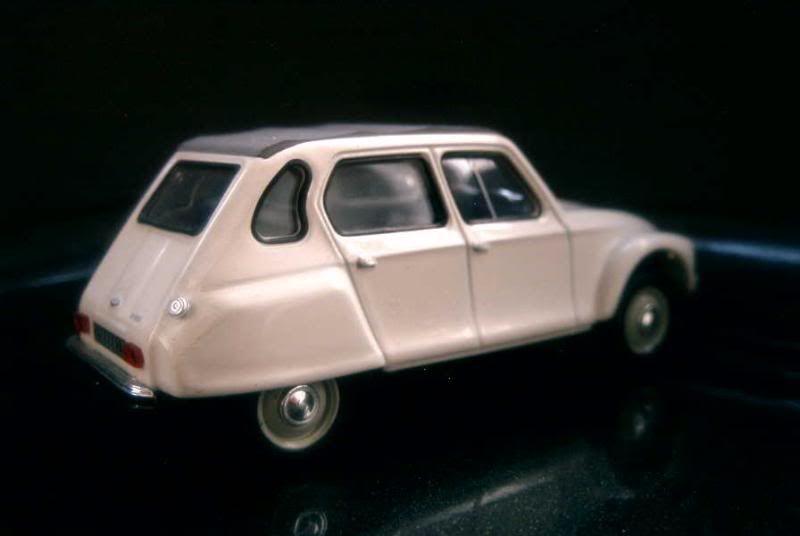
Model: Citroën Acadiane
Year: 1980
Maker: Ixo
Scale: 1/43
Distributed by: Altaya as no.53 of its Nos Chères Voitures d'Antan press series
Acquired: brand new, in May 2006, in Souillac, France
A rather correct Acadiane, worth 12/20.
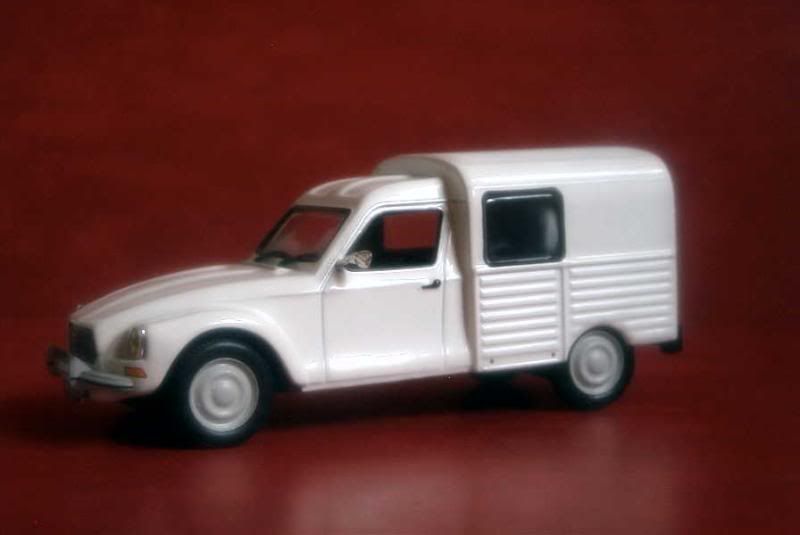
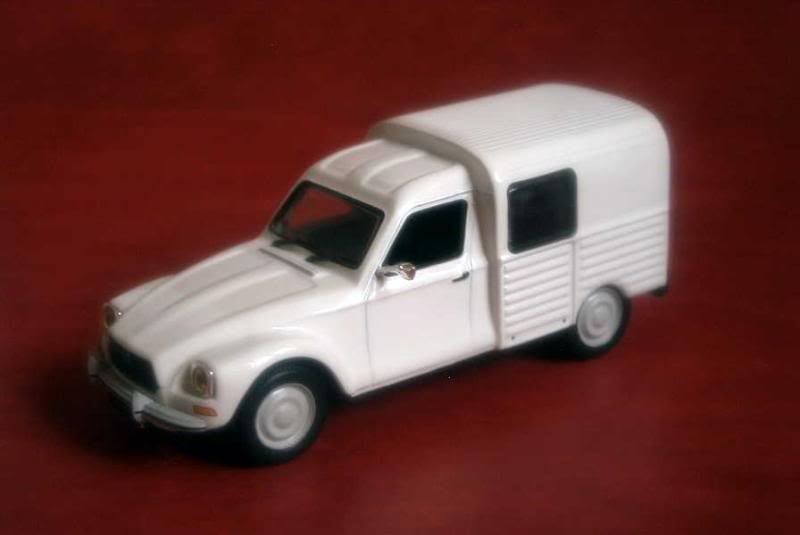
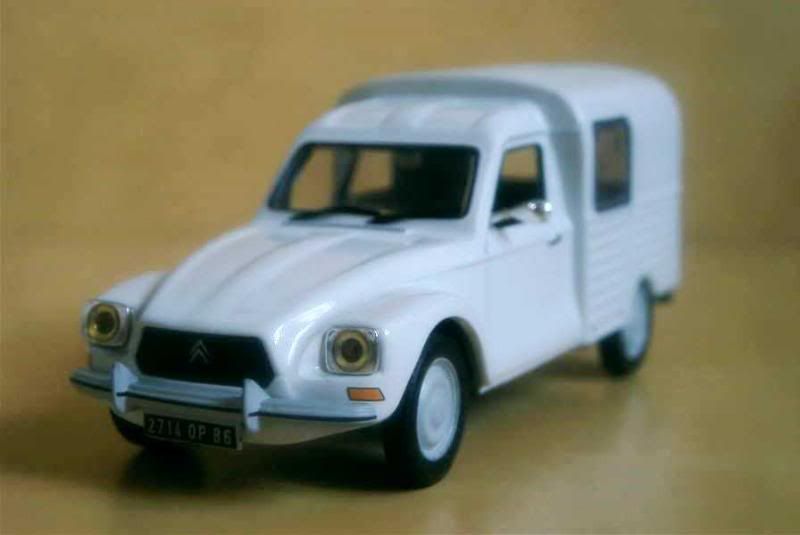
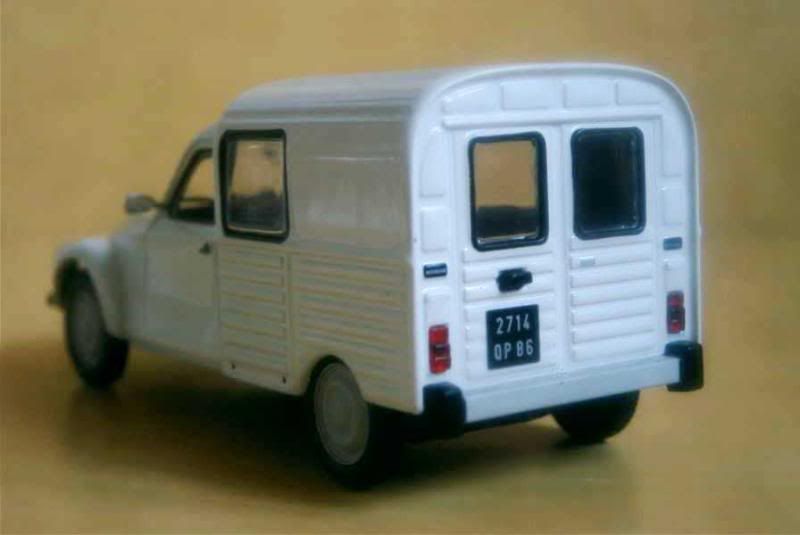
Model: Citroën Acadiane
Year: 1980
Maker: Ixo
Scale: 1/43
Distributed by: Altaya as no.1 of its Michelin press series
Acquired: brand new, in December 2006, in Souillac, France
Same model as the previous one with a different (and quite nice) decoration: 12/20.
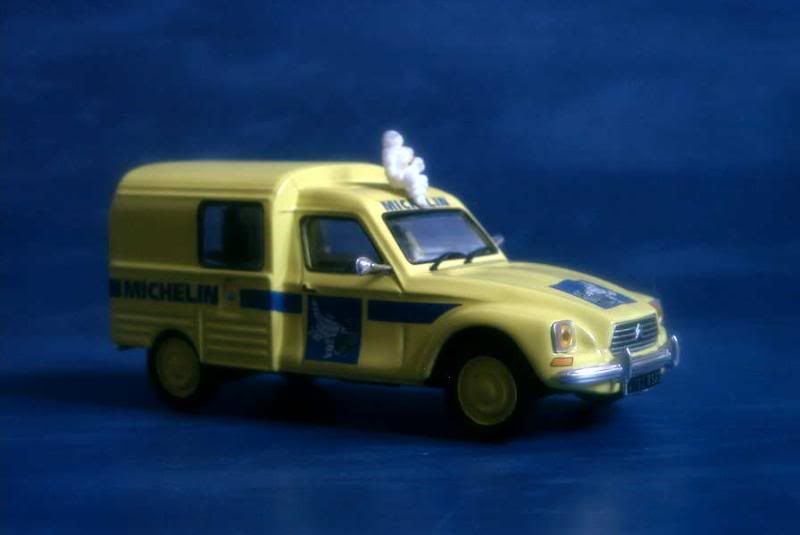

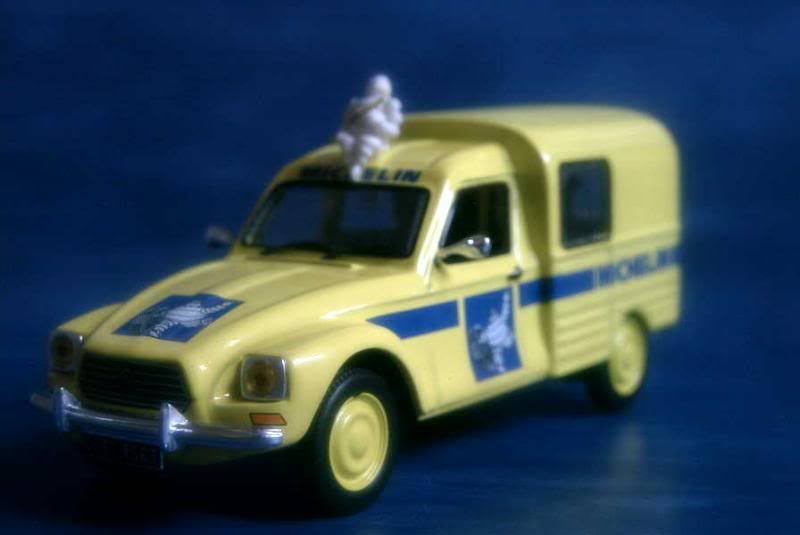
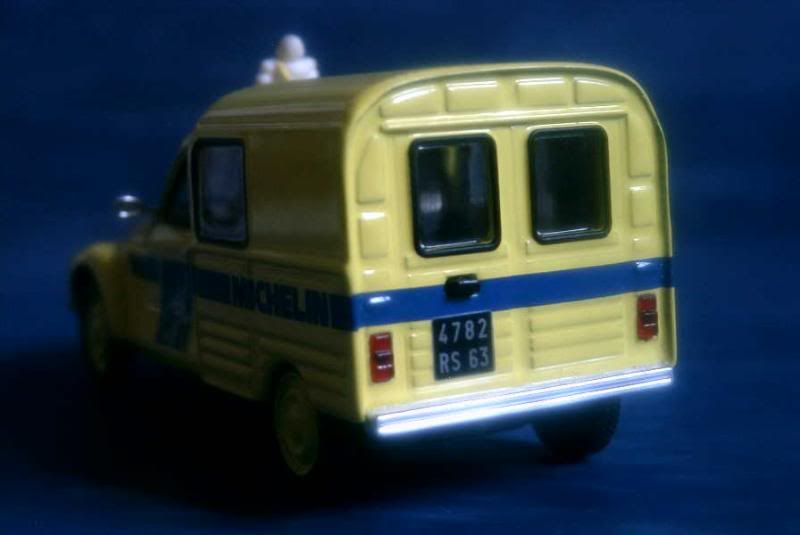
The design of the 2CV was a quarter of a century old when Citroën started to worry about its replacement. Despite early scepticism, the car had encountered a large commercial success throughout the Fifties but, in September 1961, its sales suffered a terrible blow when Renault introduced its R4, less Spartan, more practical than its rival thanks to its pioneering hatchback.
Citroën’s engineers faced a challenge: the 2CV was virtually impossible to replace. Therefore, their answer was a more upscale version of the 2CV, which would remain in production. Should the new car encounter the same success as its predecessor, it could replace it for good.
The major part of the restyling work can be credited to Louis Bionier, ironically not a designer on Citroën’s payroll, but a veteran stylist at Panhard, which had just been taken over by the Javel company. Up front the car was heavily reworked, now featuring a wider grille and integrated headlights. The rear could look similar to the 2CV’s, but actually benefited from a hatchback. New doors that were curved inward were a trademark of the car. Mechanical parts were carried over from the 2CV, including its 425 cc flat twin engine.
The new car, named the Dyane - another hint at the Panhard connection as this name had been registered by the venerable company -, was unveiled in August 1967. A few months later, in January 1968, the lack of performance of the original Dyane versus the Renault 4 was acknowledged with the introduction of a new Dyane 6 powered by the 602 cc engine of the Ami 6. An early problem of the car, the bad visibility to the rear, was solved when a third side window was added to each side of the car, an improvement which the 2CV also benefited from – actually, it had first been initiated by Belgian-built 2CVs a few years before.
Initially, the Dyane outsold the 2CV and seemed able to replace it but, after only a few years, the newer car started to lose its breath. Main causes for this premature decline were the gradual improvements of the cheaper 2CV, which received the 602 cc engine in 1970, expansion of the R4’s range, and the unveiling by Renault of yet another ground-breaking city car, the 1972 R5.
In 1978, the range of light commercial vehicles offered by Citroën was transferred from the 2CV to the Dyane, though the car actually received the name Acadiane. Sales of this 400 kg van would help boost the sales of the Dyane. An Acadiane version that is worth mentioning is an early LPG-powered variant, which appeared in 1980 with only limited success.
The Dyane’s production was interrupted at the end of model year 1983. The Acadiane survived it by four years, being built until July 1987 – none of them therefore outlived the 2CV they had been given a chance to replace.
About the models
Model: Citroën Dyane 6
Year: c.1970
Maker: Ixo
Scale: 1/43
Distributed by: Altaya as no.7 of its Nos Chères Voitures d'Antan press series
Acquired: brand new, in April 2004, through subscription, in France
Presented by Altaya as a 1968 Dyane, this has to be at least a 1970 model as it was only on that year that the car received its six-window body. I also have some reservations about the front grille. In any case Ixo fitted a 1968 registration plate to its model, making it totally implausible. This die-cast’s quality is in the average of Ixo/Altaya’s products but, because of the aforementioned lack of accuracy, I’ll limit my rating to 10/20.


Model: Citroën Acadiane
Year: 1980
Maker: Ixo
Scale: 1/43
Distributed by: Altaya as no.53 of its Nos Chères Voitures d'Antan press series
Acquired: brand new, in May 2006, in Souillac, France
A rather correct Acadiane, worth 12/20.




Model: Citroën Acadiane
Year: 1980
Maker: Ixo
Scale: 1/43
Distributed by: Altaya as no.1 of its Michelin press series
Acquired: brand new, in December 2006, in Souillac, France
Same model as the previous one with a different (and quite nice) decoration: 12/20.







No comments:
Post a Comment